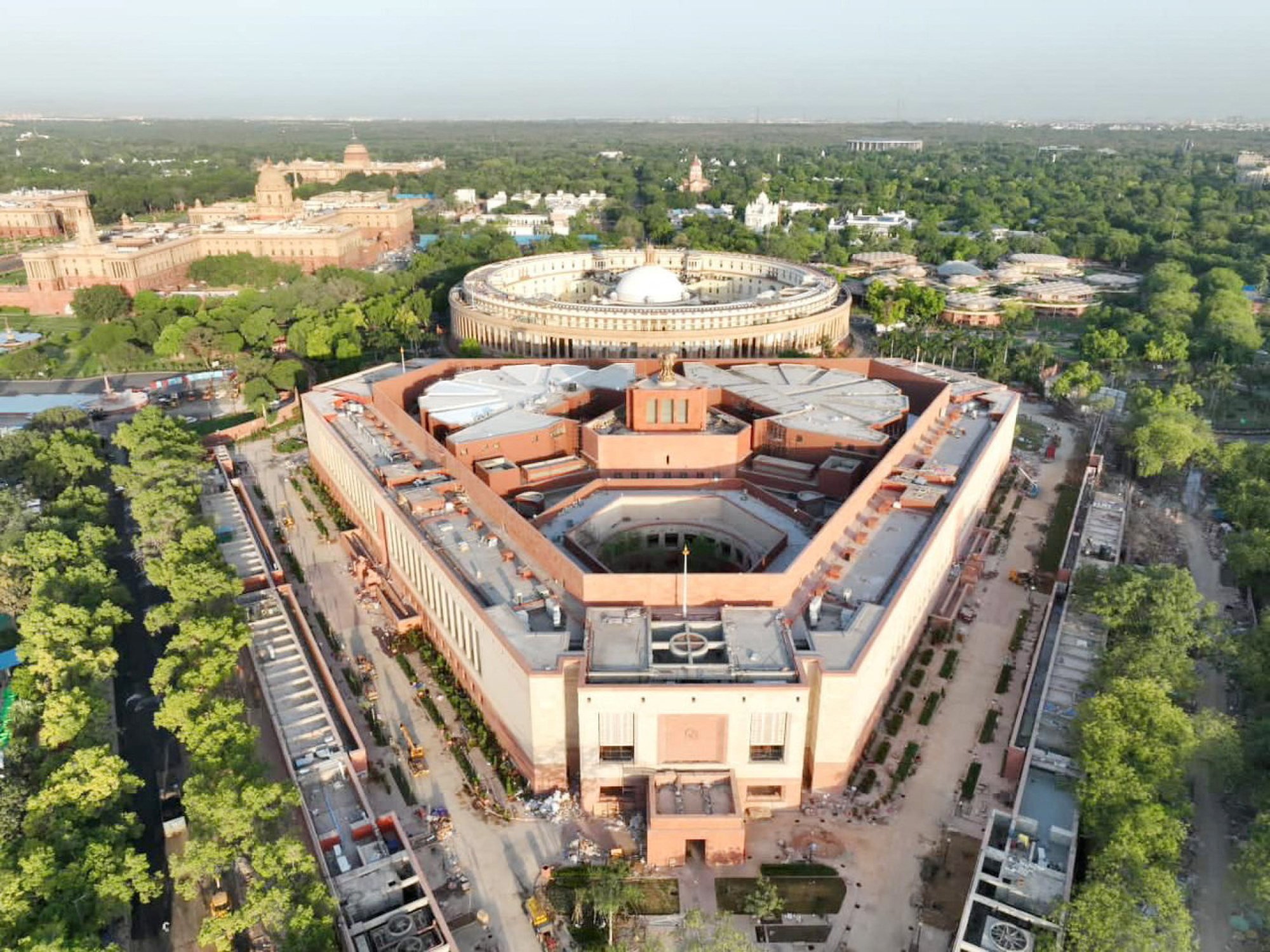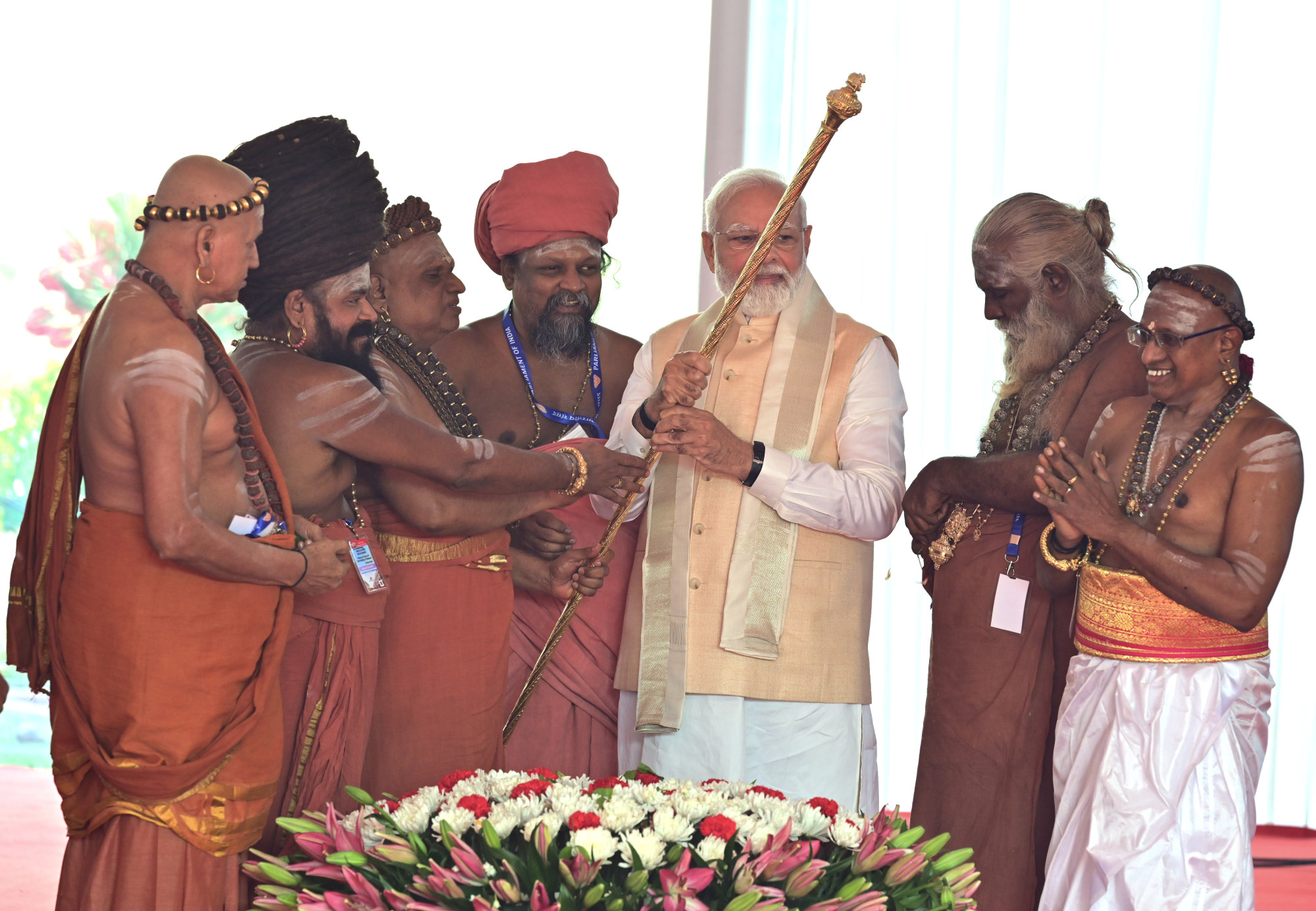
Modi opponents boycott opening of new Indian parliament as PM reshapes country’s power centre
- Indian PM Narendra Modi inaugurated a grand new parliament building on Sunday, a major part of his Hindu nationalist government’s remodelling of New Delhi
- Event was boycotted by 20 opposition parties who said Modi violated protocol to inaugurate the complex when it should have been done by the president
Prime Minister Narendra Modi inaugurated India’s new parliament building on Sunday, a modern complex which is part of his Hindu nationalist government’s grand plan to give a makeover to the British colonial-era architecture in the nation’s capital.
The inauguration, and the ongoing revamp of the heart of New Delhi based on Indian culture, traditions and symbols, comes a year before parliamentary elections in which Modi’s Bharatiya Janata Party (BJP) will pitch its strong Hindu nationalist credentials, and its performance in office over the last decade, to seek a third term.
Early in the morning, Modi held traditional prayers outside the complex in a ceremony that was also attended by top cabinet ministers. He then lit a traditional lamp inside parliament.

The event was boycotted by 20 opposition parties who said Modi had violated protocol to inaugurate the new complex and grab the spotlight when it should have been done by the president, the highest executive of the country.
“To open a new parliament building without the opposition, it does not mean there is a democracy in the country. It’s an incomplete event,” Supriya Sule, an opposition leader, told news agency ANI.
The Modi government has rejected the opposition argument, saying no protocol has been violated and that the prime minister respects the constitutional head of the country.
‘India, not Hindia’: row over India’s languages heats up during Hindi Diwas
The new parliament complex is the centrepiece of a US$2.4 billion project aimed at eclipsing the significance of colonial-era buildings in the capital’s centre, paving the way for modern buildings with a distinct Indian identity.
“Our new Parliament is truly a beacon of our democracy. It reflects the nation’s rich heritage and the vibrant aspirations for the future,” Modi said on Twitter late on Saturday.
The triangular-shaped parliament complex is just across from the old, circular heritage building built by British architects Edwin Lutyens and Herbert Baker in 1927, two decades before India’s independence.
The old parliament will be converted into a museum.
Besides modern technology, the new parliament has a total of 1,272 seats in two chambers, nearly 500 more than the old building, and at least three times as much space to accommodate new lawmakers in the world’s most populous nation.
The redevelopment has become one of the most controversial urban architectural projects since independence. There’s criticism it erases a part of New Delhi’s heritage that has spanned more than a century, and Modi is accused of using it to promote his ruling Bharatiya Janata Party’s Hindu nationalist ideology.
Inauguration of the new parliament building by PM Modi marks a key moment in his efforts to establish himself as the head of a new Hindu nationalistic India
Sunday’s ceremony was held on the 140th birth anniversary of Hindutva ideologue Vinayak Damodar Savarkar, popularly known as Veer Savarkar.
“The inauguration of the new parliament building by Prime Minister Modi marks a key moment in his efforts to establish himself as the head of a new Hindu nationalistic India,” said Nilanjan Mukhopadhyay, a New Delhi-based political analyst and a Modi biographer. “The inauguration is part of the symbolism under way to rid India of its inclusive heritage and adoption of a unitary, or Hindu, legacy as India’s only past.”
Modi’s administration said the project will help meet the need for more office space and create modern residences for the prime minister and vice-president. The redevelopment is a testament to Modi’s “vision of creating a new India, which combines modernity with our heritage and traditions,” Home Minister Amit Shah said in a recent presentation.

Last year, Modi inaugurated a redeveloped boulevard that was once named in honour of British monarch George V, who was the Emperor of India at the time the avenue was built. It was called Kingsway after a similar arterial path in London and later renamed Rajpath following India’s independence in 1947, a loose translation into Hindi.
The boulevard is now known as Kartavyapath – or the Path of Duty – and Modi said the decision to rename it erases another symbol of colonialism in India.
“Rajpath, the symbol of slavery, has become a matter of history from today and has been erased forever,” he said then.
Criticisms linger that the new parliament is a vanity project to help boost Modi’s image ahead of the 2024 national vote.
The new parliament has reportedly cost US$145 million to build.
The chamber of the lower house will have 888 seats – significantly more than its current maximum membership of 550, an indication that authorities plan a major expansion in their numbers.
Reporting by Reuters, Bloomberg, Agence France-Presse
